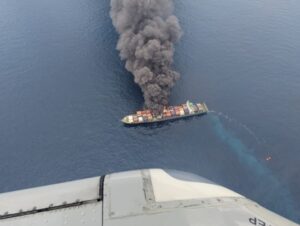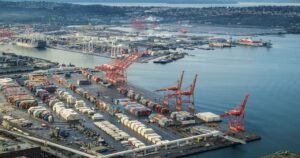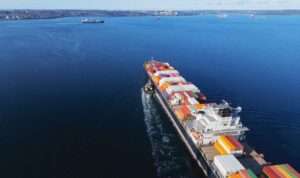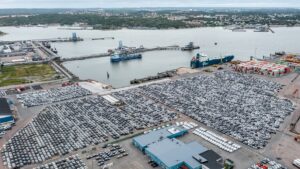Today’s ports find themselves at the centre of the digitalisation journey the global supply chain is currently on.
Industry members agree that the uptake of digital processes, automation and other efficiency-driving technologies will certainly increase in the coming years because of the impact of COVID-19 on ports and terminals.
The pace of investment and adoption of new technologies is set to accelerate as this type of digitalisation enhances resiliency to crises like the COVID-19 pandemic.
Westports, Malaysia, for instance is making a concerted effort to invest in emerging technologies and automation as it works on creating extra capacity through its terminal expansion project.
Alongside investment in automated equipment, the company aims to become a “logistics technology sandbox,” experimenting with several companies on an AI system for yard optimisation.
Use of Westport’s E-Service reached an average of 98% in December 2020 and from July 2021 the company plans to operate online-only communications with customers as part of its digitalisation efforts.
Challenges and shortcomings
But today there are still challenges to overcome before full digitalisation is achieved.
In the February 2021 edition of the PTI Journal ‘Ports embark on digital transformations’, Robin Audenaerdt of Audenaerdt Project Management calls for a revolution and says that the small steps towards digitalisation that are being taken today in ports and terminals will not cut it.
“I would argue that in taking these small steps, we will never reach the moon,” Audenaerdt writes.
We have seen that the widespread adoption of artificial intelligence (AI) at ports and terminals still faces the ‘fear of change’ challenge.
Speaking during a webinar on 23 February, Jans Niklas Sikorra, Senior IT Strategy Consultant, HPC, said, “For barriers to AI in ports, there is a fear of job replacement, but I would go one step further and say fear of change, in some ways.”
HPC uses AI for a variety of port operations, including vessel arrival time prediction, crane cable maintenance, rail position checks and number of gate visits.
Cost is also a key consideration for many.
Turning back to Westports, despite the decision to embrace automation and digitalisation at the port Managing Director Datuk Ruben Gnanalingam said, “One of the biggest challenges for us [in digitalisation] is that it isn’t cheap”.
“We’re in an industry where customers have a lot of cost pressures in a normal year. They want cost driven down. When we digitalise, the ROIs need to be good. There’s no point just doing it for the sake of it.”
Cargo flow optimisation
For modern ports and logistics actors to stay competitive there is also the need for cargo flow optimisation through digital platforms, Awake.AI argues in its latest contribution to the Journal.
“Partial supply chain optimisation is not enough in today’s world where changes and disruptions are a new normal due to climate change, changing trade routes due to COVID-19 and trade wars, and changes in manufacturing and food production locations and technologies,” said Simo Salminen, VP of Product and Co-founder, Awake.AI.
Awake.AI suggests that a collaborative and holistic approach is imperative to attain intelligent cargo flow optimisation.
“This kind of wider optimisation cannot be done alone if you are a shipping line, terminal operator/port authority or hinterland logistics operator but requires higher level, global, trusted and open data platforms like Awake.AI,” said Salminen.
In the article, Awake.AI addresses the many challenges that ports face and why full cargo flow optimisation is yet to be achieved by many.
It is clear the tools and ideas are there for all types of digitalisation and many are embarking on digital journeys, however it is also clear that we are still on the journey – and the road ahead is long.








